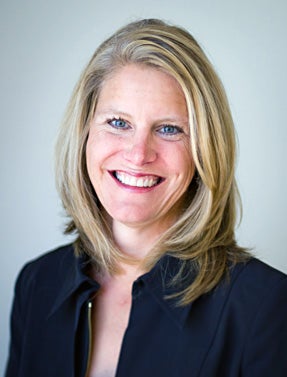- Resources
- Is Your Fortune 100 Company One of the Nearly 40 Percent that Lack a Climate Target? If so, Read This. Then Call Me.
Resources
Is Your Fortune 100 Company One of the Nearly 40 Percent that Lack a Climate Target? If so, Read This. Then Call Me.
Published: December 5, 2018 by Elizabeth Sturcken
I have helped Walmart, Starbucks and other companies get started with sustainability. I can help you too, using all the lessons I’ve learned from them.
I don’t want to sound like just another environmentalist waving my hands, jumping up and down that we need to act to reverse climate change NOW. The truth is simply this: I know it can be done, sustainability targets create business value and companies stand to lose big financially if they don’t act.

Don’t take my word for it. Take it from the White House, which recently released a report showing a side of climate change that many people haven’t yet seen the precise price tag of climate impacts to the U.S. economy. Projected climate impacts by the end of the century include $141 billion from heat-related deaths, $118 billion from sea level rise and $32 billion from infrastructure damage.
Think back to the recession of a decade ago. Remember the devastating impact on our economy (and possibly your business)? This will be double that.
What does this mean for the nearly 40 percent of Fortune 100 companies that haven’t set a climate target or more broadly, any U.S. company? Supply chains will be disrupted here in the United States and overseas. Disasters will impact factory production, transportation will be disrupted, costs will increase and agricultural productivity will suffer.
Almost no industry here in the U.S. will be able to escape the negative effects of climate change on their business.
Therefore, I have an offer for you: pick up the phone and call me. Let’s get started on your company’s sustainability journey.
I lead our supply chain team at the Environmental Defense Fund, which invented the model for business and environmental partnerships over 25 years ago. We recently helped Walmart set a goal to cut one billion metric tons of greenhouse gases from their global supply chain by 2030.
We do not take money from the companies we work with, so my offer is better than any Black Friday deal. Seriously, if you are one of the Fortune 100 that wants to figure out how to move forward on sustainability, the offer to talk with us here at EDF is sincere. If you are feeling shy, but want some direction on the way forward with sustainability, here is some free advice: the three reasons for you to set a goal in 2019.
Reason #1: Savings
The first reason for you to set a goal in 2019 money. A report from CDP which holds the world’s largest collection of self-reported corporate environmental data, and other public sources finds that nearly 80,000 emission-reducing projects by 190 Fortune 500 companies reporting data showed nearly $3.7 billion in savings in 2016 alone.
Reason #2: Your Family
The image above was the view from the top of my apartment building in San Francisco last week when the air quality was so unhealthy that I couldn’t let my kids play outside.
The recent wild fires in California, that killed people and destroyed homes and businesses, caused toxic air up and down much of the state. I keep telling my children ages 11 and 13 that “this is not normal!” However, unfortunately, as Governor Jerry Brown recently said, “This is the new abnormal.”
According to Gallup, more than half of Americans think that climate change won’t affect them personally. If you fall in this category, please take it from me the effects to my family are as real as they can get. You will be affected one way or another maybe severe weather, maybe dramatically more expensive food, or maybe living through one of these traumatic events directly yourself.
Reason #3: Science
Which leads me to the final reason you should act on climate science. The White House report comes just after another report from the Intergovernmental Panel on Climate Change (IPCC), which was written and edited by 91 scientists from 40 countries. The report shook me to my core and as the New York Times reports, it “describes a world of worsening food shortages and wildfires, and a mass die-off of coral reefs as soon as 2040 a period well within the lifetime of much of the global population.”
The bottom line: We need to not only reduce emissions but start to actually pull emissions from the atmosphere. And we need to do it all now. This means cutting emissions from factories, implementing full energy efficiency in every sector, ramping up renewable energy, designing products to minimize greenhouse gases, protecting tropical forests, planting trees, and improving agriculture to increase soil carbon and reduce fertilizer pollution.
If you needed more reasons than savings, family or science, how about supply chain risk reduction, new product innovation and employee and customer engagement? Whatever your reason, now is the time for you to act. This is your wake up call. Now that you have (hopefully) a reason for setting a sustainability goal in 2019, here’s my final piece of advice how to do it:
- Start by evaluating your operations and supply chain before you set a goal in order to figure out your environmental impact and find the quickest wins and biggest opportunities to reduce that impact. Use tools like The Sustainability Consortium or CDP, to report publicly. This will help you set audacious, public and science-based targets for greenhouse gas emissions.
- Collaborate for scale by working with others including NGOs like EDF, companies and governments in strategic and selective ways to create change beyond your boundary of control.
- Engage proactively on environmental policy to ensure long-term competitiveness, innovation and bottom-line efficiencies. We can’t get where we need to go without driving large-scale change and we cannot do that without policy.
- Accelerate environmental innovation. 21st century problems require 21st century solutions. Using technology, data analytics and visualization, companies and investors can make environmental problems visible and actionable and even profitable.
Follow Elizabeth Sturcken on Twitter.
